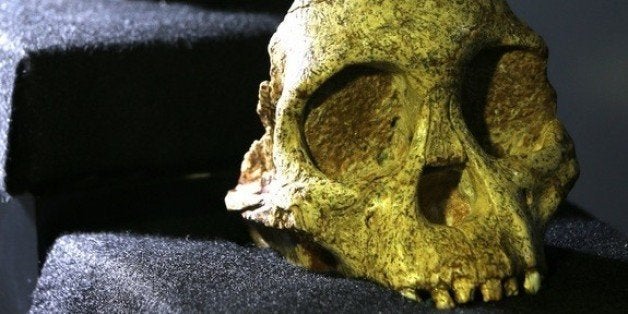
The skull of an ancient human ancestor fails to show evidence of the type of brain expansion typically seen in modern human infants, according to a new study.
The "Taung child" fossil is known as the first and best example of early brain evolution in hominins, the group containing humans and their extinct relatives.
A recent study had suggested that features of the specimen allowed the Taung child's brain to grow well into infancy, as occurs in modern human children. But new brain scans of the Taung fossil show it lacks these features, suggesting the postnatal brain growth seen in modern humans may not have evolved until the rise of the Homo genus of species, states a new study published today (Aug. 25) in the journal Proceedings of the National Academy of Sciences. The Homo genus of species evolved about 2.5 million years ago. [Top 10 Mysteries of the First Humans]
Australian anthropologist Raymond Dart, who worked at the University of Witwatersrand in South Africa, unearthed the Taung specimen in Taung, South Africa in 1924. The fossil, which is thought to be roughly 3 million to 4 million years old, is a well-preserved cast of the inside of the cranium, known as an endocast. It was the first known fossil of Australopithecus africanus, an extinct close hominid relative of humans.
"For close to 15 years, it was the only known australopithecine," said study co-author Kristian Carlson, an anthropologist at the University of Witwatersrand in Johannesburg. "One could argue that it represented even more than this, being the first indication of the apelike nature of our ancestors."
It's unusual to find such a well-preserved endocast, and juveniles are very rare in the hominin fossil record, so the Taung child remains a hot subject of study, Carlson told Live Science.
In 2012, a group of researchers led by American anthropologist Dean Falk, of Florida State University in Tallahassee, hypothesized that the Taung fossil may contain several features found in modern human infants. These features include an unfused patch of connective tissue between the two halves of the frontal bone of the skull, known as the metopic suture, as well as the so-called "soft spot" on an infant's head, known as an open anterior fontanelle. The researchers also suggest that several more-recent hominins may have possessed these same features.
In the new study, Carlson and his colleagues took the first computerized tomography, or CT, scans of the Taung fossil. The scans failed to find any sign of these human-infant skull features. What's more, the researchers say these features may not even result in the evolutionary benefits they supposedly confer, Carlson said.
The researchers suggest other hominin fossils should be re-examined using the same scanning technology. "We've demonstrated the misdiagnosis in Taung, and we believe it would be prudent to assess whether the presence of these features — unfused metopic sutures and open anterior fontanelles — may have been misdiagnosed in the additional specimens," Carlson said.
The findings may be controversial, though Carlson suspects they will confirm what many people in the field already think. "But hopefully there will still be a lively debate to advance the science aspects forward," he said.
Follow Tanya Lewis on Twitter and Google+. Follow us @livescience, Facebook & Google+. Original article on Live Science.
Clarification: This article was updated to reflect that Homo refers to the Homo genus and not a species.
